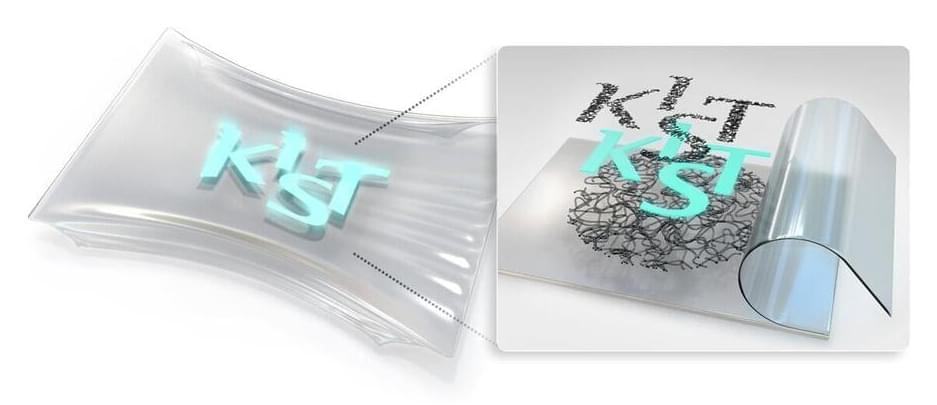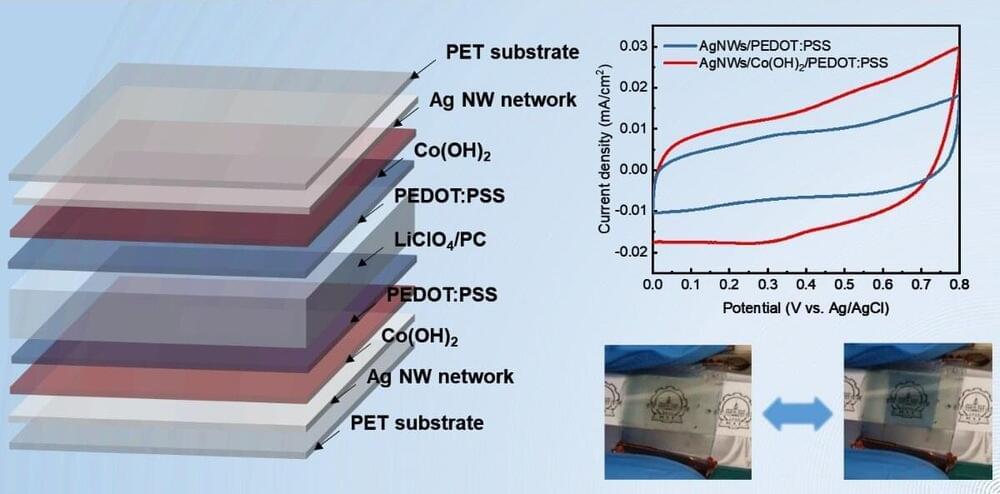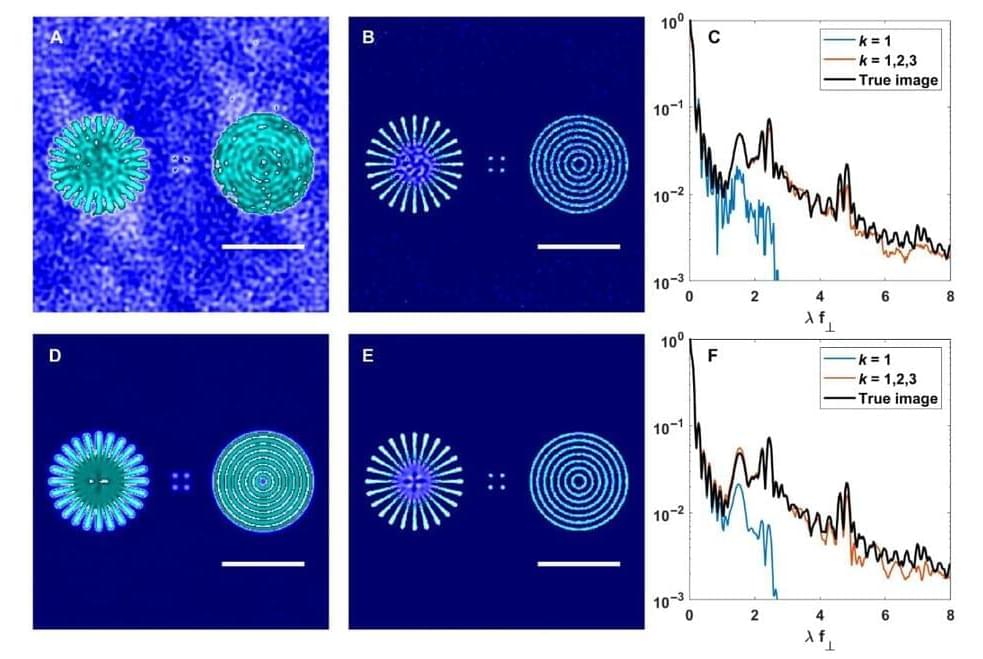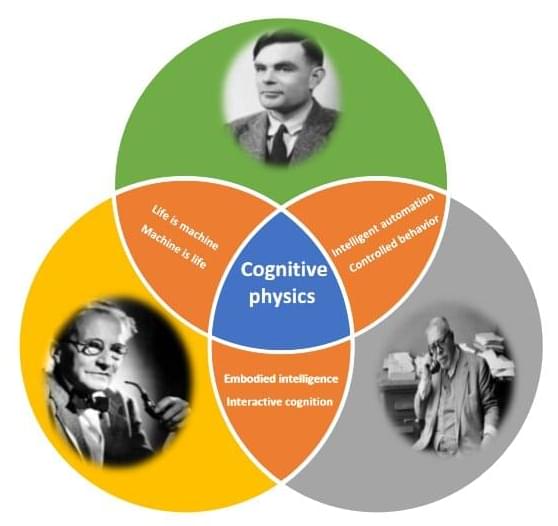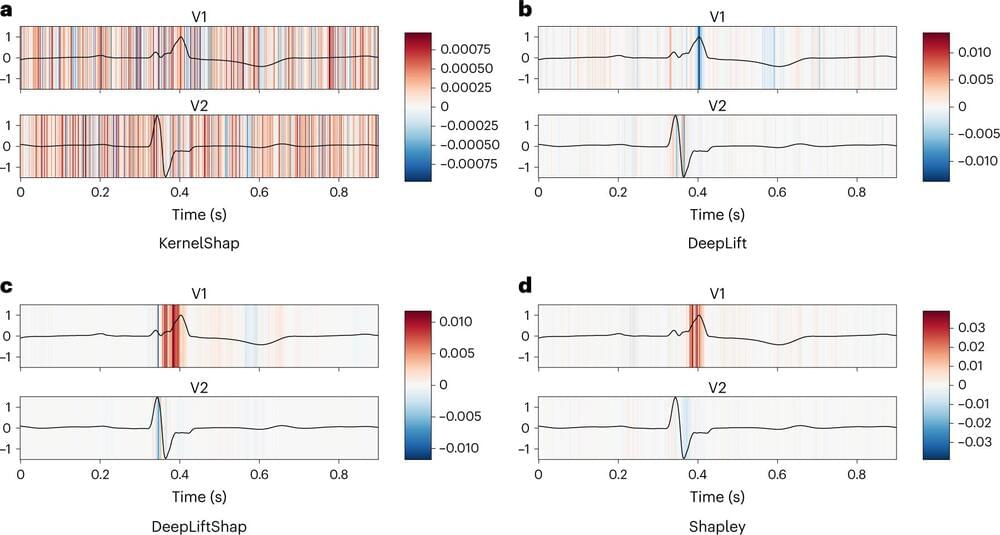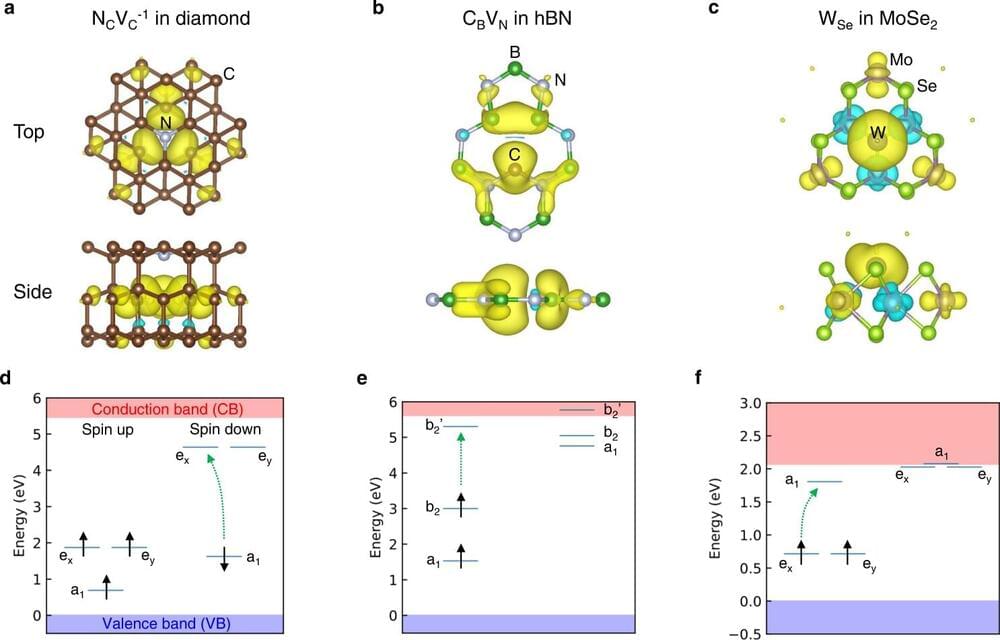Page 2234
Mar 25, 2023
Google’s Bard and Bing AI Already Citing Each Other in Neural Hall of Mirrors
Posted by Dan Breeden in category: robotics/AI
Microsoft’s Bing Chat just cited misinformation generated by Google’s Bard chatbot, just one day after Bard was released. Oof.
Mar 25, 2023
Team develops large-scale stretchable and transparent electrodes
Posted by Dan Breeden in categories: nanotechnology, solar power, sustainability, wearables
A Korean research team has developed a large-scale stretchable and transparent electrode for use as a stretchable display. The Korea Institute of Science and Technology (KIST) announced that a research team, led by Dr. Sang-Soo Lee and Dr. Jeong Gon Son at KIST’s Photo-Electronic Hybrids Research Center, has developed a technology to fabricate a large-area (larger than an A4 sized paper) wavy silver nanowire network electrode that is structurally stretchable with a high degree of conductivity and transparency.
Transparent electrodes, through which electricity flows, are essential for solar cell-and touchscreen-based display devices. An indium tin oxide (ITO)-based transparent electrode is currently commercialized for use. The ITO-based transparent electrode is made of a thin layer of metallic oxides that have very low stretchability and is very fragile. Thus, the ITO electrode is not well suited for flexible and wearable devices, which are expected to quickly become mainstream products in the electronic device market. Therefore, it is necessary to develop a new transparent electrode with stretchability as one of its main features.
A silver nanowire is tens of nanometers in diameter, and the nano material itself is long and thin like a stick. The small size of the nanowire allows it to be bent when an external force is applied. Since it is made of silver, a silver nanowire has excellent electrical conductivity and can be used in a random network of straight nanowires to fabricate a highly transparent and flexible electrode. However, despite the fact that silver nanowire is bendable and flexible, it cannot be used as a stretchable material.
Mar 25, 2023
Bifunctional flexible electrochromic supercapacitors successfully fabricated
Posted by Dan Breeden in categories: energy, nanotechnology, wearables
Researchers from the Harbin Institute of Technology and Southern University of Science and Technology have fabricated bifunctional flexible electrochromic energy-storage devices based on silver nanowire flexible transparent electrodes.
Publishing in the International Journal of Extreme Manufacturing, the team used silver nanowire flexible transparent electrodes as the current collector for a bifunctional flexible electrochromic supercapacitor.
This bifunctional flexible device can exhibit its energy status through color changes, and can serve as an energy supplier for various wearable electronics, such as physiological sensors. The findings could have a widespread impact on the future development of smart windows for energy-efficient buildings.
Mar 25, 2023
The best of both worlds: A new algorithm fuses quantum and classical information for high-quality imaging
Posted by Dan Breeden in categories: computing, information science, quantum physics
Researchers from Colorado State University and the Colorado School of Mines have thought up a new computational imaging strategy that exploits the best of both the quantum and classical worlds. They developed an efficient and robust algorithm that fuses quantum and classical information for high-quality imaging. The results of their research were published Dec. 21 in Intelligent Computing.
Recently, the quantum properties of light have been exploited to enable super resolution microscopy. While quantum information brings new possibilities, it has its own set of limitations.
The researchers’ approach is based on classical and quantum correlation functions obtained from photon counts, which are collected from quantum emitters illuminated by spatiotemporally structured illumination. Photon counts are processed and converted into signals of increasing order, which contain increasing spatial frequency information. The higher spatial resolution information, however, suffers from a reduced signal-to-noise ratio at increasingly larger correlation orders.
Mar 25, 2023
What can ChatGPT maker’s new AI model GPT-4 do?
Posted by Dan Breeden in category: robotics/AI
The company behind the ChatGPT chatbot has rolled out its latest artificial intelligence model, GPT-4, in the next step for a technology that’s caught the world’s attention.
The new system can figure out tax deductions and answer questions like a Shakespearan pirate, for example, but it still “hallucinates” facts and makes reasoning errors.
Here’s a look at San Francisco-based startup OpenAI’s latest improvement on the generative AI models that can spit out readable text and unique images:
Mar 25, 2023
Machine intelligence and humanity benefit from ‘spiral’ of mutual learning, says proponent of ‘cognitive physics’
Posted by Dan Breeden in categories: quantum physics, robotics/AI
Deyi Li from the Chinese Association for Artificial Intelligence believes that humans and machines have a mutually beneficial relationship.
His paper on machine intelligence, which was published in Intelligent Computing, builds on five groundbreaking works by Schrödinger, the father of quantum mechanics, Turing, the father of artificial intelligence, and Wiener, the father of cybernetics.
Inspired by Schrödinger’s book “What is Life? The Physical Aspect of the Living Cell,” Li believes that machines can be considered living things. That is, like humans, they decrease the amount of entropy or disorder in their environment through their interactions with the world.
Mar 25, 2023
The end of text-based passwords? ‘Transparent image moving’ provides a new solution
Posted by Dan Breeden in categories: computing, mobile phones, security
It’s past time the world moves away from text-based passwords and verifications for mobile phones and starts embracing more secure image-based solutions, say computer scientists from the University of Surrey.
In a new study, Surrey scientists demonstrate an image-based authentication system called TIM (Transparent Image Moving) for mobile phones to help reduce the risk of shoulder surfing attacks. TIM requires users to select and move predefined images to a designated position for passing authentication checks, similar to those required for online shopping.
The proof-of-concept study found that 85% of TIM users believed it could help them to prevent password guessing and shoulder surfing attacks. The study also found that 71% of participants think TIM is a more usable image-based solution than others on the market. The research has been published in the Journal of Information Security and Applications.
Mar 25, 2023
Shining a light into the ‘black box’ of AI
Posted by Dan Breeden in categories: biotech/medical, economics, finance, health, information science, robotics/AI
Researchers from the University of Geneva (UNIGE), the Geneva University Hospitals (HUG), and the National University of Singapore (NUS) have developed a novel method for evaluating the interpretability of artificial intelligence (AI) technologies, opening the door to greater transparency and trust in AI-driven diagnostic and predictive tools. The innovative approach sheds light on the opaque workings of so-called “black box” AI algorithms, helping users understand what influences the results produced by AI and whether the results can be trusted.
This is especially important in situations that have significant impacts on the health and lives of people, such as using AI in medical applications. The research carries particular relevance in the context of the forthcoming European Union Artificial Intelligence Act which aims to regulate the development and use of AI within the EU. The findings have recently been published in the journal Nature Machine Intelligence.
Time series data—representing the evolution of information over time—is everywhere: for example in medicine, when recording heart activity with an electrocardiogram (ECG); in the study of earthquakes; tracking weather patterns; or in economics to monitor financial markets. This data can be modeled by AI technologies to build diagnostic or predictive tools.
Mar 25, 2023
Team devises crystal-clear solution to quantum computing puzzle
Posted by Dan Breeden in categories: computing, quantum physics, security
University of Texas at Dallas researchers have developed a new approach that addresses challenges in the field of quantum computing and has the potential to revolutionize computing, communications and electronic security.
To make solid-state qubits, the basic information unit for quantum computers, a defect must be inserted into the solid material to control the spin states of electrons. Creating and positioning the defect, however, especially in the most commonly used solid material—synthetic diamonds —poses a major challenge.
UT Dallas researchers found that making qubits from thin, two-dimensional sheets of crystals called transition metal dichalcogenides (TMDs) instead of diamond can solve this problem. Led by Dr. Kyeongjae Cho, professor of materials science and engineering in the Erik Jonsson School of Engineering and Computer Science, the researchers published their findings online Dec. 6 in Nature Communications.


